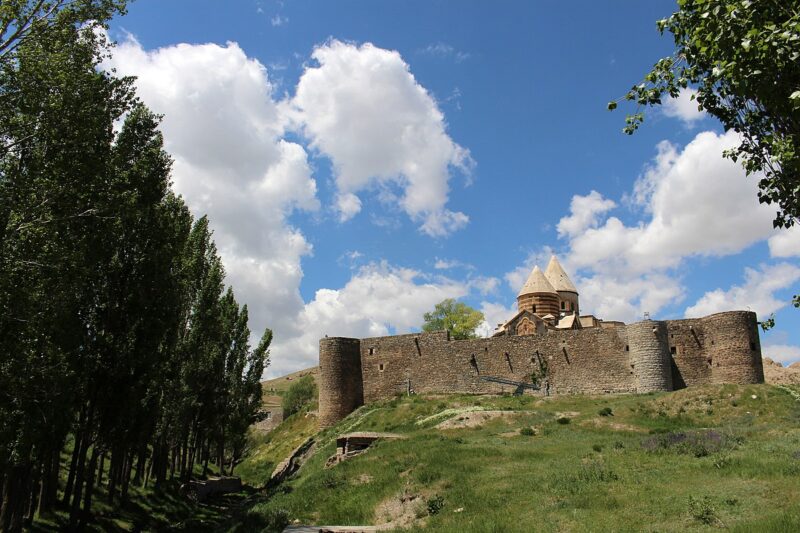Qara Church: a treasure of history and spirituality
Qara Kesila, which is also known as the Church of St. Thaddeus, has become one of Iran’s unique tourist attractions, not only because of its antiquity and magnificent architecture, but also because of its spiritual and religious status among the world’s Christians.
A rich history:
According to traditions, this church was built in 43 AD by Saint Thaddeus, one of the apostles of Jesus Christ. Thaddeus was martyred on the way to spread Christianity to Armenia by Sanadruk, the then king of Armenia, and was buried in this place.
Queen Helen, the mother of Constantine the Great, built a monument on the tomb of Thaddeus in the early 4th century AD. This building, which is considered to be the first church in Qara-Kelisa, has been renovated many times over the centuries and has become its present form.
Qara Church has witnessed important events throughout its history. Among these events, we can mention the wars between Iran and Russia in the 19th century, during which the church was severely damaged.
Architecture:
The church complex consists of three main parts, including the main church, the prayer hall and the courtyard.
The main church has a square plan and a conical dome. The dome of the church is made of crushed stone and brick and is decorated with turquoise tiles.
The chapel is located on the west side of the main church and has a rectangular plan. The chapel has an altar and wall paintings with religious themes.
The church area is surrounded by a high wall and inside it there are several other buildings, including a tomb and a bell tower.
The materials used in the construction of the church include rubble stone, brick, clay and plaster.
Importance:
Qara Church is one of the oldest churches in the world and the first church in the Christian world.
As the burial place of Saint Thaddeus, one of the apostles of Jesus Christ, this church has a very high spiritual and religious position among the Christians of the world.
Qara Church was registered as one of the UNESCO World Heritage Sites in 2008.
This church receives many pilgrims and tourists from all over the world every year.


